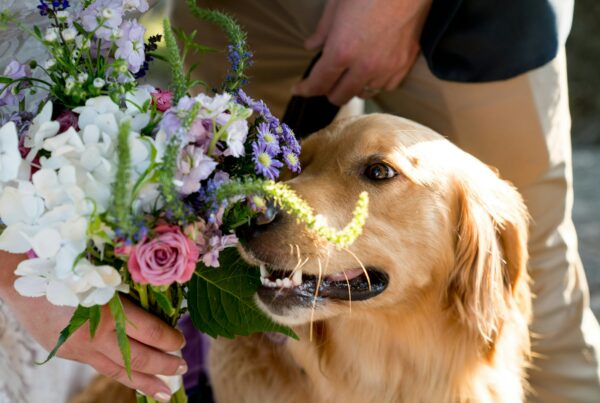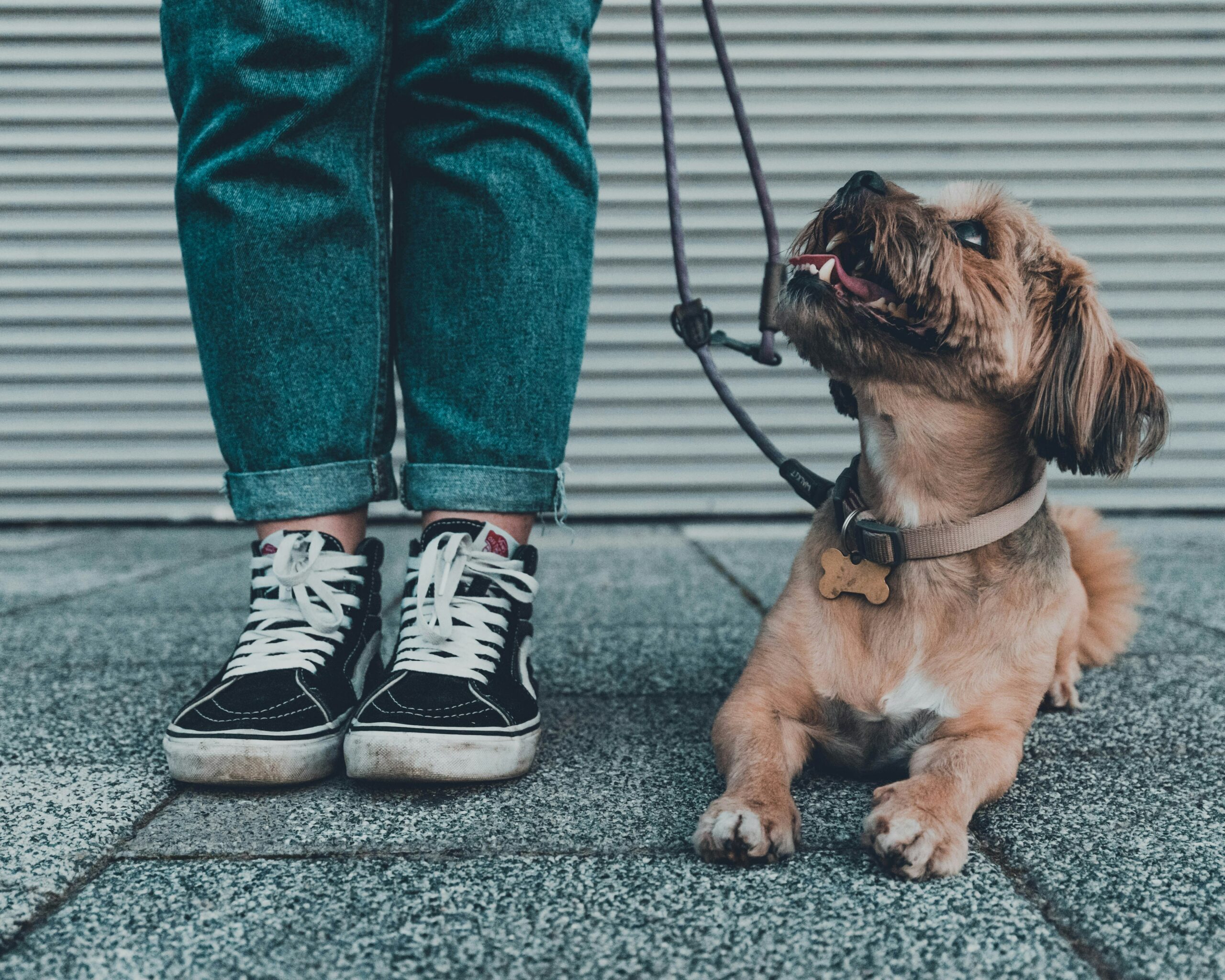Sometimes it may feel like your pets see your home as one big jungle gym. Your cats are climbing the drapes. Dogs are digging up the drip system. The fact is, your animals are both energetic and curious. When that energy and curiosity cross with your household appliances or common ingredients around the house, it can be a recipe for disaster. Read on for tips on keeping your favorite furry friends safe and happy at home.
Portable Kitchen Tools
When you have pets, treat your portable kitchen tools the same way you would a toddler. Heated appliances like electric griddles, crockpots and Instant Pots all pose burn risks. Keep them away from the edge of the counter so your dog can’t pull it over on herself and your cat can’t push it on the dog’s head.
All appliances that plug in pose a risk of electrocution. Keep cords safely pushed to the back of the counter when in use and unplug and stow appliances when they aren’t in use, so even if your pet decides to chew on the cord he can’t get zapped.
Blenders and food processors have sharp blades that can injure a curious pet. Store them where your pets can’t get at them easily. When you are washing the blades make sure they get stored promptly.
Washer and Dryer
Especially for cats, a big pile of warm laundry is like you’ve given them their own solar power system and a winning lottery ticket. Remember that an open door on a recently-run dryer can be even more appealing. Make sure that you keep the doors closed on both the washer and dryer when they aren’t in use.
Your appliance manufacturer may recommend keeping the door open in between uses to prevent mildew and odor. If you follow those instructions there are a couple of other options. First, prevent access to your laundry area. Keep the door closed to the laundry room or install a baby gate to prevent entry if it’s a more open area. The less reliable option is to make sure everyone in your family remembers to do a washer and dryer check before running the machine. Even one slip up could mean the life of your pet, so it’s not the best option.
Oven and Stove Top
The recommendation here is to keep your pets out of the kitchen while you’re cooking. If that’s not possible, just make sure you know where they are and enlist help when you need it. The primary risk for your pet around your cooker is getting burned from touching a hot element. Keep her back while you’re moving food in or out of the oven. This will also protect you from accidental burns if your pet jumps on you while your hands are full of hot food.
For the stovetop, make sure handles on your pots and pans are turned back toward the wall so your pet can’t jump up and potentially flip hot food on himself. Another safe option is only cooking on your back burners. If your stove has burner knobs on the front edge, use child proof covers to make sure Fido doesn’t jump up on the knobs and either burn down the house or gas everyone inside.
Portable Heaters
Your portable heater poses multiple risks for and from your pet which can be difficult to mitigate. You don’t want your pet by it but you can’t close it in a room on its own without supervision. Heaters need at least three feet of open space on all sides but your pets may want to snuggle right up to the heating surface, creating a burn risk. Try baby gates to keep your pets a sufficient distance from the heat source. Remember that you should never use strip plugs or extension cords with a space heater. They aren’t designed to handle the electrical load of a space heater and may overheat and catch fire. Extension cords are also one more thing for your pet to chew on that could cause electrocution. Also, make sure the cord you do use isn’t a tripping hazard for you or your pets.
Portable heaters, generally, aren’t that safe. They are the second leading cause of house fires in the U.S. behind only cooking mishaps. Try wrapping up at home or turning the thermostat up a couple of degrees. If you must have a space heater look for one that’s heavy enough that your pets can’t accidentally knock it over. Newer space heaters also have cool-touch exteriors and overheating cutoffs that can help prevent accidents for you and your pet.
Refrigerators
Your cat lying on his back and pulling open the fridge door like a pro makes for a funny video, but it’s actually dangerous for your pets. If your cat or small dog is able to open the fridge or freezer they can also accidentally get trapped inside and suffocate. Of course, there’s also the risk that they will eat something that isn’t animal-safe. Once your animal is able to open that door, it’s time to invest in a child lock to keep them out.
Your pets aren’t great for the refrigerator either. Their hair can clog up the ventilation system, shortening the life of your appliance. Make sure to vacuum the vent at the base of the fridge and pull your fridge out and vacuum down the cooling coils on the back every year or so.
Computers and Appliances With Rechargeable Batteries
All batteries are toxic for your pets and should be disposed of carefully. Pets who chew on batteries can release the corrosive acid inside, causing ulceration in the mouth and stomach. The lithium-ion batteries used in computers and robotic vacuums pose an especial hazard, causing necrosis to the esophagus and intestinal track within 30 minutes of being swallowed. Because of the acid, you should never force your pet to vomit up a battery, instead rinse his mouth for 20 minutes and then make an emergency trip to the vet.
You can prevent these injuries by carefully disposing of batteries following the manufacturer’s suggestions, never casually tossing them into the kitchen trash can. For computers, tablets and phones, keep them well out of reach of your pets, especially ones that you know like to chew.
Dishwasher
You will probably notice if your dog or cat is hiding out in the dishwasher. In this case, it’s more what’s in the dishwasher that’s the problem. Pets can smell those dirty dishes and they smell like a second dinner. There are so many human foods that are bad for your pet. Most people know not to give their pets chocolate, but did you know that these foods are also potentially dangerous?
- Mushrooms
- Macadamia nuts
- Onions
- Avocados
- Grapes
When you let your dog “help” clean the dishes by licking the plates in the dishwasher you are opening the potential that he is eating something that could make him sick.
Safety Around the House
Speaking of food safety, it’s important to address your pet’s safety with artificial sweeteners. Xylitol is an artificial sweetener that is highly toxic to both dogs and cats. Xylitol is commonly found in chewing gum, so if you keep a pack in your purse or your back pocket, make sure you put it away at the end of the day, somewhere your animals won’t be able to get at it. Xylitol is also used in many brands of toothpaste. Keeping the bathroom door shut will keep the cat from destroying the entire toilet paper roll and keep your dog from eating the toothpaste tube.
One of the best ways to create a safe environment is to treat your pet as if she were a toddler. Install cabinet latches to keep her out of foot kept low down. Use a locking garbage can lid to prevent him from getting into dangerous food or splintery bones. Latch your bedroom closet and drawers to keep your shoes in one piece but also to keep your pets away from mothballs. Mothballs can kill your dog or cat, and there is no treatment, just waiting and hoping that your animal survives.
In the garage take the same care with tools as you would with kitchen appliances, storing cords away safely and sharp objects out of reach. The garage or shed are troves of potentially lethal goods. Make sure your car isn’t leaking antifreeze that dogs and cats love to lick because of its sweet flavor. Make sure rat poison and plant fertilizer haven’t spilled and are stored where animals can’t get to them.
From the kitchen to the bathroom, from the laundry room to the garage, there are countless ways your pet can be injured or cause injury. Watch your cat as she moves through the house; look at your home from your dog’s point of view. You’ll get an idea of where issues might arise and how you can prevent them. No one wants to lose a pet to a preventable accident. Following these guidelines will minimize risk to your pet and give you peace of mind.
We’ve cover the inside tips, now what about those of you with an outdoor patio, backyard and front yard? Check out: 4 Effective Ways to Make Sure Your Pet is Safe in the Backyard
Love our content? Share it with a friend or link it to social media. Like short clips of cute household pets? Training tips? Follow us on instagram @nydognanny or on YouTube at nydognanny. Have some news you needs to get to dog and cat parents stat? Email info@newyorkdognanny.com with your article pitch.



